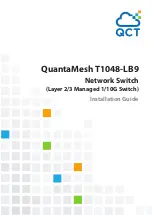
Version
Description
8.3.11.1
Introduced on the Z9000.
8.3.7.0
Introduced on the S4810.
7.8.1.0
Introduced to all platforms.
7.6.1.0
Introduced on the S-Series.
7.5.1.0
Introduced on the C-Series.
6.1.1.1
Introduced on the E-Series.
Usage
Information
To enable OSPF on an interface, the
network area
command must include, in its
range of addresses, the primary IP address of an interface.
NOTE: An interface can be attached only to a single OSPF area.
If you delete all the network area commands for Area 0, the
show ip ospf
command output does not list Area 0.
passive-interface
Suppress both receiving and sending routing updates on an interface.
Z9500
Syntax
passive-interface {default |
interface
}
To enable both the receiving and sending routing, use the
no passive-
interface interface
command.
To return all OSPF interfaces (current and future) to active, use the
no passive-
interface default
command.
Parameters
default
Enter the keyword
default
to make all OSPF interfaces
(current and future) passive.
interface
Enter the following keywords and slot/port or number
information:
• For Port Channel groups, enter the keywords
port-
channel
then a number. The range is from 1 to 128.
• For a 10-Gigabit Ethernet interface, enter the keyword
TenGigabitEthernet
then the slot/port information.
• For a 40-Gigabit Ethernet interface, enter the keyword
fortyGigE
then the slot/port information.
• For a VLAN, enter the keyword
vlan
then a number from
1 to 4094.
1288
Open Shortest Path First (OSPFv2 and OSPFv3)
















































